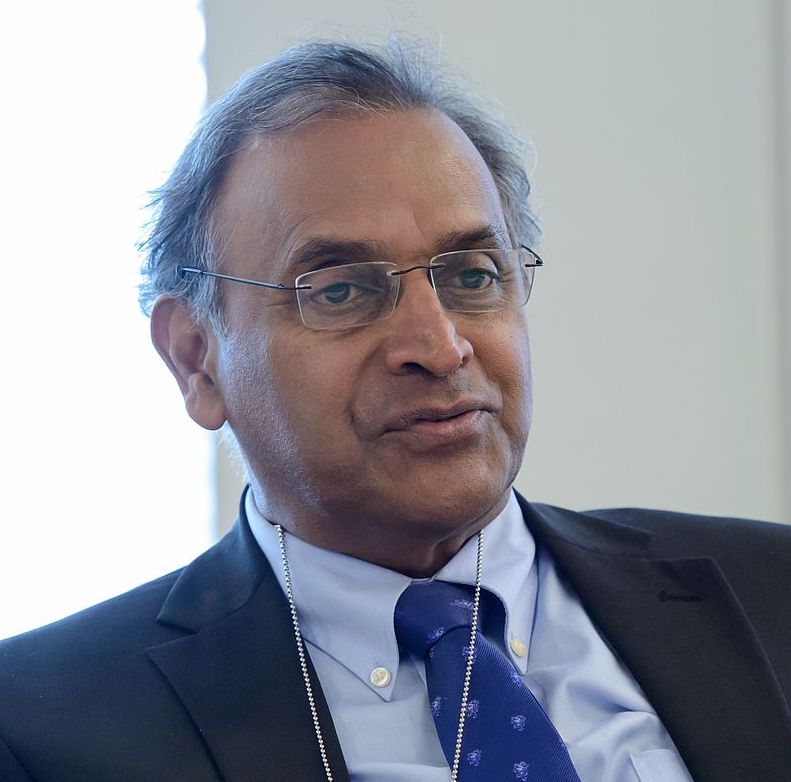On July 7, 2017, seventy-two years after history’s most inhumanely destructive weapon was used on Hiroshima and Nagasaki, a Conference of the majority of Member States of the United Nations voted – 122 for, 1 against and 1 abstention – to adopt the Treaty on the Prohibition of Nuclear Weapons (TPNW). The Treaty is the first legally binding international agreement to comprehensively prohibit nuclear weapons.
It has been a long journey. In January 1946, the first resolution of the newly established United Nations called for nuclear disarmament. At every session of the General Assembly since, resolutions with various nuances on nuclear disarmament have been adopted.
The transition is mirrored in the unravelling of the arms control architecture. In the nuclear field, we are almost back to the years immediately after the Second World War, when rules for the nuclear age had not yet been developed. The essence of common security – that security is something you must build in tandem with your adversary – is alien to contemporary power politics. We delude ourselves if we think that war between nuclear-weapon states is a malady of the past, no longer deserving our attention.
Historic landmarks include:
- The Treaty on the Non-Proliferation of Nuclear Weapons (NPT) of 1968 – the most widely subscribed to disarmament treaty – which under article VI provides for negotiations “in good faith” towards nuclear disarmament.
- The first special session of the General Assembly devoted to disarmament in 1978. The session’s final document remains the high watermark of international consensus on disarmament and identifies the goal of eliminating nuclear weapons.
- The Comprehensive Nuclear-Test-Ban Treaty (CTBT), adopted in 1996, which needs to be ratified by eight remaining states to enter into force.
- Five regional nuclear-weapon-free zone treaties that insulate vast geographical areas from the stationing of nuclear weapons. Most are supplemented by protocols signed by the NPT nuclear-weapon states (NWS), pledging to respect those zones.
- The 1995 advisory opinion of the International Court of Justice which called for the possession and use of nuclear weapons to be declared illegal.
However, over the same time frame, the number of nuclear-weapon-armed countries has grown to nine – including the five NWS recognized under the NPT. And many other states have huddled under others’ nuclear umbrellas.
Broadly speaking, the debate between the NWS and their allies, on the one hand, and the non-nuclear-weapon states (NNWS), on the other, centres on whether their seemingly common objective for the elimination of nuclear weapons and general and complete disarmament should be reached by first achieving security and then nuclear disarmament or by agreeing on a nuclear weapon ban, followed by its gradual implementation. The latter approach – supported politically by the Non-Aligned Movement countries and by non-governmental organizations (NGOs) and civil society – has faced obstructionism from the NWS and their supporters despite the precedent established by the outright ban on the two other categories of weapons of mass destruction: biological weapons through the Biological Weapons Convention of 1972 and chemical weapons through the Chemical Weapons Convention of 1996. The Chemical Weapons Convention, for example, is supported by an international organization and an intrusive verification system.
Article VI of the NPT had long been the banner under which NNWS had fought their battle for nuclear disarmament. After the indefinite extension of the NPT in 1995, that avenue was increasingly blocked. Agreements reached by consensus at the NPT Review Conferences in 1995, 2000 and 2010 were repeatedly violated by the NWSs.
Nuclear weapon proliferation by India and Pakistan, which stayed out of the NPT, seems to have been tolerated, if not endorsed, by the five NWS, while the Democratic People’s Republic of Korea remains under tough sanctions in a tense stand-off with the NWSs in the United Nations Security Council. Frustrated by unimplemented NPT Review Conferences and decisions, civil society grew more strident in its demands. Initiatives adopted by NGOs to ban landmines and abolish cluster munitions led to treaties outside the United Nations framework, which were then brought within the United Nations, confirming their legitimacy and enlarging their circle of adherents.
On nuclear weapons, where the stakes were higher and the opposition of the NWSs more formidable, the International Campaign for the Abolition of Nuclear Weapons formed an energetic coalition of NGOs. Austria and Switzerland, supported by the International Committee of the Red Cross, initiated the “Humanitarian Initiative” from within the NPT. The initiative grew into a broad campaign, with conferences in Oslo, Nayarit and Vienna. The success of these initiatives was recognized with the adoption of the 2016 United Nations General Assembly resolution calling for the 2017 Conference and, then, with the Conference itself. The Conference was boycotted by the NWS and their allies. From NATO, only the Netherlands participated and voted against the final resolution adopting the text of the Treaty.
Despite this, several factors operate in favour of the TPNW. First, it has a modest target of 50 ratifying states for entry into force, rather than the 44 specifically named states –including the United States of America – in the CTBT. Second, history shows that the time between the first surge of signatories and the totally inclusive nature of such a treaty may be long, but the validity of the treaty as international law is undisputed. For instance, when the United Nations General Assembly endorsed the draft text of the NPT, the vote was 95 to 4, with 21 abstentions. As of March 2020, 35 States have ratified the TPNW. The 122 countries that voted for the adoption of the TPNW are thus pioneers on a bold and exciting path, combining security concerns with humanitarian interests.
We are at a transformational moment.
Violence and conflict triggered by extremist ideologies and arms racing resulted in $1.9 trillion of military expenditure in 2019.
Nine nuclear-weapon-armed states with a total arsenal of roughly 13,000 warheads threaten the catastrophe of nuclear war intentionally or by accident.
Populism is being enthroned in many parts of the world, and intolerance of minorities is spreading, triggered by the largest migration of displaced people since World War II.
The Treaty on the Prohibition of Nuclear Weapons is, in contrast, a ray of hope for our troubled times.
Ambassador Jayantha Dhanapala is a former Sri Lankan diplomat and senior UN official. He was the second Director of UNIDIR serving from 1987-1992

